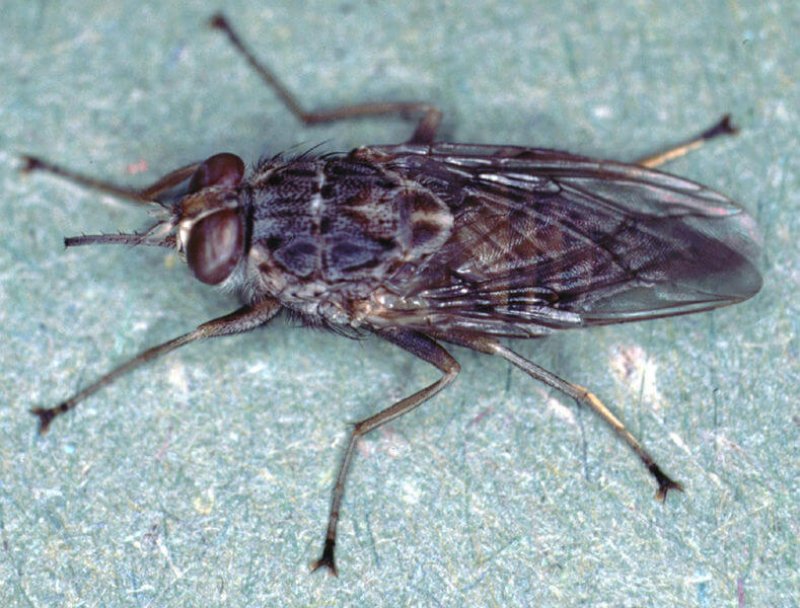The tsetse fly is both deeply strange and deeply troublesome. Unlike most insects, it carries its young internally, nourishing its single offspring on a diet of milk. It also is the primary vector of sleeping sickness, a deadly disease that affects humans and livestock alike in Sub-Saharan Africa.
Jennifer Frazer, writing at National Geographic, summarizes the tstse’s impact:
[Sleeping sickness] strikes about 20,000 people a year and puts an estimated 70 million people in sub-Saharan Africa at risk. And since the disease also affects livestock, it makes animal husbandry all but impossible in some parts of the region, exacting a severe economic toll.
The newly sequenced genome, published in Science, points to several new targets for tsetse control. “For instance,” writes Frazer, “the tsetse genome reveals a single regulatory protein, ladybird late, that orchestrates milk production in the fly.” Knock out that gene with chemicals that inhibit its function and you’ve thrown a monkey wrench in the tsetse’s ability to reproduce.
The fact that the tsetse only carries one young at a time and invests so much in its offspring via milk — the polar opposite of most insects “shotgun” approach to breeding by producing large numbers of eggs and leaving them to fend for themselves — makes the species especially well-suited for population control mechanisms that target reproductive success.
Its genome also reflects is blood-only diet. The team found no genes for processing sugar. Again, the specificity of is biology, as revealed by is genome, makes an enticing target. According to Frazer, Serap Aksoy, professor of epidemiology at the Yale School of Public Health and the lead author on the Science paper, “hopes it might be possible to administer vaccines to livestock that create antibodies to the proteins found in the tsetse gut and saliva glands. This would keep the flies from digesting their blood meals well; without sufficient energy and nutrition, they’d be unable to support a pregnancy.”
Even the genes involved in sight, smell, and taste might prove useful for designing better traps by comparing tsetse genes to the genes of other problem insects and seeing which traps work best for the most similar species.
The response Frazer captured from the larger disease biology community is celebratory:
“I thought it was an excellent paper and that this is really kind of a landmark in the molecular genetics of neglected tropical diseases,” said Gilbert Burnham, professor of international health at Johns Hopkins Bloomberg School of Public Health in Baltimore, Maryland.
[…]“I think it actually was a pretty heroic effort,” added Anthony James, a distinguished professor of vector biology at the University of California, Irvine. James, who studies mosquitoes that transmit dengue fever and malaria, said the level of annotation and gene description in the tsetse project was far deeper than what exists for several mosquito genomes.
Often, when a new genome is sequenced, we’re given promises of useful outcomes. Often, these promises are vague. The study by Askoy and her team, however, identifies specific targets by combining natural history, epidemiology, and genetics to find weak points in the biology of the tsetse fly. It may be a landmark in the genetics of tropical disease, but it’s also an example of the best genetics has to offer in efforts at vector control.
Read Jennifer Frazer’s original article at National Geographic: “Sequencing Tsetse Fly Genome Reveals Surprises That May Save Lives“
Kenrick Vezina is Gene-ius Editor for the Genetic Literacy Project and a freelance science writer, educator, and naturalist based in the Greater Boston area.
Additional Resources:
- “Genome Sequence of the Tsetse Fly (Glossina morsitans): Vector of African Trypanosomiasis,” Science
- “New Tool to Fight Deadly Tsetse Fly,” Donald G. McNeil Jr. | New York Times
- “Blunting the tsetse fly’s deadly bite,” Monte Morin | Los Angeles Times
- “Genetic Code Of The Deadly Tsetse Fly Unraveled,” Science 2.0































